1. Introduction
The decreasing trend of natural resources including farmable land and water, combined with the increasing trend in the world population, mandates growers to establish high-density orchards with higher yield efficiency. Establishing these orchards requires a higher number of trees on dwarf rootstocks per a unit of land as compared to the traditional orchards. Precocity is one of the main reasons for establishing high-density systems and thus the presence of early-fruiting branches is crucial [1]. Nevertheless, nursery trees often have insufficient and un-evenly distributed side branches, requiring the use of plant growth regulator and/or physical manipulation to force branching along the main leader. Voltz et al., [2] reported that application of Promalin [6-benzyladenine (BA) and gibberellin (GA4+7)] induced higher and longer side branches with wider crotch angles. Miller and Eldridge [3] reported that foliar sprays of Promailn to one-year old apple trees significantly increased number of lateral branches in 5 of 9 cultivars. Also, Promalin had a significant effect on the number of lateral shoots per tree in young “Junica” apple on M.9 rootstock [4].
Rossi et al., [5] used 0, 500, 1000 and 1500 mg∙L−1 Promalin on one-year-old “Catarina” apple trees and found that number of buds increased but length of side shoots decreased after 160 days, as the concentration of Promalin increased. They concluded that Promalin at 1500 mg∙L−1 was the most effective rate for increasing the number side branches that were evenly distributed along the trunk in “Catarina” apple trees.
It has been reported that application of Promalin and paclobutrazol, either separately or together, on “Bing” sweet cherry trees significantly increased numbers of shoots and spurs when compared with control trees [6]. Other researchers have found that application of Promalin at 500 ppm or Maxcel (a cytokinin plant growth regulator) at 500 ppm and 1000 ppm in “Golden Delicious” apple trees significantly enhanced total number of shoots and decreased average shoot length in modern high-density orchards [7].
Girdling is cutting through and partially or completely removing of narrow-width ring from the bark. Scoring is cutting through cambium layer without removing bark. In this method, flow of solutes through phloem will be stopped or slowed down for a shorter period than by girdling [8]. The impacts of girdling and scoring on yield and fruit quality attributes have been studied in several fruit crops such as grape (Vitis vinefera) [9], pear (Pyrus communis) [10], apple (Malus domestica) [8] [11] [12] [13] [14], avocado (Persea Americana) [15], nectarine (Prunus persica) [16], mandarin (Citrus reticulata) [17] [18] and orange (Citrus sinensis) [19] [20] [21]. Fallahi et al. [12] reported that cambium interruption affected phytopigments, proline, chlorophyll index, mineral nutrient and fruit quantity attributes.
The effects of adding N on nursery apple trees have been studied in several research [22] [23] [24]. Cheng and Schupp [22] reported adding N can lead to vigorous vegetative growth, poor fruit color development, and fruit storage disorders and diseases during the growing season in vigorous apple trees. Low N supply in soils with low organic matter may result in low yield, small fruit size, and low cold tolerance [22] [23].
Cheng and Fuchigami [24] fertilized Bench-grafted Fuji/M.26 trees with 0, 2.5, 5, 7.5, 10, 15 or 20 mM nitrogen. They reported with increasing N supply from fertigation, tree N concentration increased and trees with high N produced a larger total leaf area than those with low N.
Despite the urgent needs for planting well-feathered nursery trees in high density orchards, nurseries often produce trees with uneven or poorly developed side branches, resulting in delayed production. Therefore, our goal in this project was to study the impacts of scoring and girdling, with and without Promalin applications and the influence of five rates of N and two methods of tip removal from the trees leaders on number, size, and crotch angles of side branches in newly planted “Aztec Fuji” apple trees with poor and uneven branching.
2. Materials and Methods
2.1. Orchard Establishment and General Cultural Practices
The experimental orchard was established at the Sunnyslope area, near Marsing, Idaho, USA in early April 2019. The experimental site was located at 43˚32'44''N116˚48'28''W, at an elevation of 701 m above sea level and had a semi-arid climate with an annual precipitation of approx. 297 mm on a sandy loam soil with pH 7.6. In general, cultural practices other than branching, N, and tree tipping were like those recommended for commercial orchards in the Pacific Northwest [25].
“Aztec Fuji” trees on Budagovsky 9 (Bud 9) rootstock (Willow Drive Nursery, Wenatchee, WA) were planted at 0.9 × 3.6 m spacing with a north-south row orientation. “Snow Drift” crab apple (Malus × “Snowdrift”) on Bud 9 rootstock (Willow Drive Nursery, Wenatchee, WA) was planted in each row as a pollinizer.
One micro-sprinkler line (Rain Bird Corporation, Azusa, CA) was installed along the tree lines and trees were irrigated according to the method described by Fallahi et al. [8]. Trees in the Cambium and Tipping experiments received 60 g actual nitrogen/year as UN-32. Micronutrients, particularly, Fe and Zn, were sprayed with Fe-Metalosate and Zn-Metalosate, each at a rate of 0.156% to all trees of these experiments twice in spring and once in early summer each year.
2.2. Cambium Cut, Promalin, and Grower’s Treatments
This experiment was started on April 23, 2019. The trees were not feathered and had occasional branches that were irregularly grown on the trunk. In this study, seven trees were tagged in each block (replication) and treated with one of the following treatments:
1) Un-treated Control; where no scoring, girdling, or Promalin was applied.
2) Soring; where about 1.5 - 2.0 cm of the bark of tree above several buds around the trunk were scored in a spiral pattern, with a sharp linoleum utility knife until the blade reached and touched the wood tissue.
3) Scoring + Promalin; where the trees were scored as described earlier but the scored area received a paste of Promalin at 500 ppm, using a fine brush. This paste was prepared by mixing Promalin: latex paint at the ratio of 1:4.
4) Girdling; where about 1.5 - 2.0 cm of the bark of tree from approximately 5 mm above several buds around the trunk were girdled in a spiral pattern, using a 3.18-mm VACA girdling knife. We made sure that the cut was made through the bark until the cambium layer was disconnected and blade reached and touched the wood tissue and the cut portion of the bark was removed.
5) Girdling + Promalin; where the trees were girdled as described earlier, but the girdled area received a paste of Promalin at 500 ppm, using a fine brush.
6) Promalin Spray; each tree was sprayed with one Liter of Promalin at the final concentration of 500 ppm. This spray was prepared by mixing Promalin: latex paint at a ratio of 1:4 and sprayed with a backpack sprayer to a “dripping point” on May 7, 2019 when shoots were about 6 cm and maximum day-time temperature was 21˚C, and wind speed was about 3 km/hr.
7) Grower’s Short Cut; Tree leaders received a severe cut at about 75 cm from the ground level at the time of planting.
2.3. Nitrogen Treatments
This experiment was conducted in the same orchard as the “cambium experiment” but in a different set of trees. Nitrogen as UAN 32 (urea and ammonium nitrate, 32% N) was applied during at the rate of 60, 80, 100, 120, or 140 g actual N per tree during May 15 through June 15, 2019.
2.4. Tipping Treatments
This study was conducted in the same orchard as the “cambium experiment” on April 23, 2019 but in a different set of trees. In this experiment, seven pairs of newly planted uniform trees were selected in different locations of the orchard. About two cm from the terminal bud on the main leader in one of these two trees was removed (Tipped), while the leader on the other tree was remained untouched (Non-tipped).
2.5. Measurements of Branch Number, Length, and Angles
Tree trunk cross sectional area, branch number, growth, angle, and uniformity were measured in December 2019. Circumferences of these trees were measured at 30 cm above the bud union and trunk cross sectional areas (TCSA) were calculated. Number, of all branches longer than 20 cm, that were grown within the top 25 cm of the original cut on the leader at the time of planting (Region 1) and those grown between the ground level and 25 cm below the original cut on the leader (Region 2) were counted. Also, four random branches from Region one and two branches from Region 2 were selected and their length and angles in relation to the main trunk were measured.
Uniformity of branching was determined by ranking trees from a scale of 1 (most non-uniform) to 10 (most uniform).
2.6. Experimental Designs and Statistics
The experimental design in each of the “Cambium treatments”, “Nitrogen Treatments”, and “Tipping Treatment” was a randomized complete block with seven blocks or replications. The assumption of normal data distribution was checked by computing univariate analyses for all tree responses in this study. Analyses of variance was conducted using SAS (SAS Institute, Cary, NC, USA), with GLM and means were compared by least significant difference (LSD) at P ≤ 0.05.
3. Results and Discussion
3.1. Effect of Cambium Cut and Promalin on Tree Growth, Bourse Shoot, Side Branch Number and Length
Pictures for all treatments were taken in mid-November 2019 and presented in Photos 1-9. Trees receiving Grower’s Short Cut or Girling + Promalin were significantly shorter than those of Un-treated Control (Table 1). Although trees
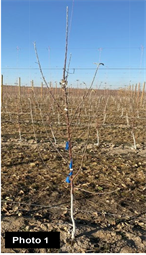
Photo 1. Scoring. Cambium cuts with and without Promalin increased but Promalin Spray at 500 ppm did not affect the number and length of side branches in “Aztec Fuji” apple.
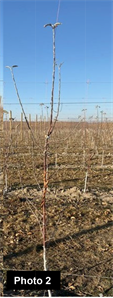
Photo 2. Scoring + Promalin. Cambium cuts with and without Promalin increased but Promalin Spray at 500 ppm did not affect the number and length of side branches in “Aztec Fuji” apple.
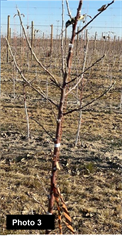
Photo 3. Scoring + Promalin. Cambium cuts with and without Promalin increased but Promalin Spray at 500 ppm did not affect the number and length of side branches in “Aztec Fuji” apple.

Photo 4. Girdling. Cambium cuts with and without Promalin increased but Promalin Spray at 500 ppm did not affect the number and length of side branches in “Aztec Fuji” apple.
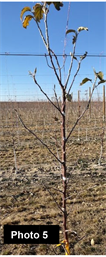
Photo 5. Girdling + Promalin. Cambium cuts with and without Promalin increased but Promalin Spray at 500 ppm did not affect the number and length of side branches in “Aztec Fuji” apple.
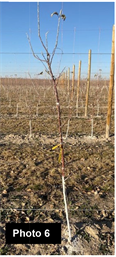
Photo 6. Promalin Spray. Cambium cuts with and without Promalin increased but Promalin Spray at 500 ppm did not affect the number and length of side branches in “Aztec Fuji” apple.

Photo 7. Un-treated Control trees were taller than other trees.
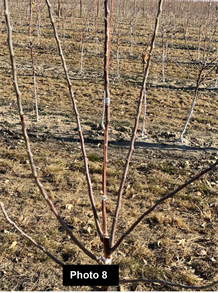
Photo 8. Trees with Grower’s Short Cut had thicker trunk with 4 major leaders.
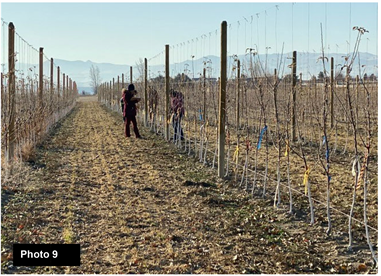
Photo 9. The general view of the experimental orchard in Sunnyslope, ID, USA.
with other treatments were also shorter than Un-treated Control, differences were not significant. These differences happened because half of the tree in the Grower’s Short Cut treatment was removed at the time of pruning. Also, Girling + Promalin resulted in reversing the apical dominance and thus, creating side branches and reducing the tree height. This result agrees with a previous report in ‘Bing’ sweet cherry (Prunus avium) by Jacyna et al. [6]. However, TCSA in Grower’s Short Cut trees was larger than all other treatments (Table 1), because strong leaders (shoots) that grew from the Grower’s Short Cut trees served as stronger source of carbohydrate for an overall smaller sink of the tree, leading to a higher TCSA.
Applications of Scoring, Girdling, or Promalin Spray increased the number of bourse shoots as compared to Un-treated Control and Grower’s Short Cut trees (Table 1). However, addition of Promalin to Scoring and Girdling magnified these differences and made them statistically significant (Table 1). The increase in induction of bourse shoots is expected to increase precocity in these
![]()
Table 1. Effects of cambium disconnection and Promlalin on tree height, trunk cross sectional area (TCSA), branch number, branch length, and total number of busted buds in newly planted “Aztec Fuji” apple.
zMean separation within columns in each group of treatments by LSD at 5% (*) or 1% level (**); ns = non-significant.
treatments. Trees with a Grower’s Short Cut had significantly fewer bourse shoots than any treatment with a cambium cut with or without Promalin (Table 1) and thus not recommended under conditions of this study.
Promalin application, either as a single spray or as a paste form to a cut, significantly reduced number of side branches in the 2 - 15 cm category regardless of their cambium cut treatment (Table 1).
Girdling without Promalin reduced the number of side branches in the “longer than 16 cm” category on the in top 25 region of the original tip cut of the leader (Table 1). Numbers of side branches longer than 16 cm below that region in trees receiving Scoring + Promalin or Girdling + Promalin treatments were similar to those on trees with only Scoring but they were higher than those receiving other treatments or Un-treated Control (Table 1). Addition of Promalin to scoring or girdling practice numerically (but not significantly) increased the number of side branches larger than 16 cm as compared to each of these treatments without Promalin, because the cut created by soring or girdling served as an entry for Promalin to reach inside of the cambium vascular route. Trees with only Scoring or Girdling had higher numbers of side branches than those with Promalin spray. Previous reports indicated that Promalin spray did increase number of side branches [26]. This contradiction can be due to the fact that we sprayed Promalin at 500 ppm only once while they sprayed 4 time.
Side branches in the longer than 16 cm category on trees receiving Grower’s Short Cut treatment were longer than those with all treatments (Table 1). This indicates that source-to-sink ratio in trees with Grower’s Short Cut treatment was higher than those with other treatments. Scoring, Girdling, and all treatments with a Promalin application reduced length of the side branches with longer than 16 cm category on the lower portion of the trunk due to their higher numbers when compared with Un-treated Control and Grower’s Short Cut treatment, although differences were not always significant (Table 1). This observation on Promalin agrees with previous reports [2] [6] [14] [26].
3.2. Effect of nitrogen Treatment on Tree Growth, Bourse Shoot, Side Branch Number and Length
Trees receiving N at the actual rate of 140 g/tree had significantly shorter trees with lower TCSA, and shorter side-branches throughout the tree trunk than those receiving 60 g annual N/tree (Table 1). This observation suggests that application of N at a rate of 140 g/tree was excessive, resulting to low soil pH and leading to ammonium toxicity (Table 1), as previously reported in “Delicious” apple [27]. Nitrogen rate did not impact number of branches (Table 1). Application of actual N at 140 g/tree also tended to reduce tree TCSA as compared to the other four rates of N (Table 1).
3.3. Effect of Tipping on Tree Growth, Bourse Shoot, Side Branch Number and Length
Tipping of the tree leader resulted in shorter trees with a higher number of branches on the top 25-cm region of the original top cut (Table 1). Nevertheless, tipping the leader did not impact the number side branches on the lower portion or lengths of side branches at any region on the tree. Based on this result, tipping of the leader in the newly planted trees is not necessary if the terminal bud is undamaged.
3.4. Effect of Cambium Cut and Promalin on Shoot Distance, Angle, and Number of Bourse Shoots
All cambium treatments significantly reduced branch distances as compared to Un-treated Control (Table 2), likely because these treatments increased the number of side branches while not affecting the tree height (Table 1). Branches on trees with a Grower’s Short Cut had shorter distance than those on trees treated with Scoring or Promalin + Girdling.
![]()
Table 2. Effects of cambium disconnection and Promlalin on shoot distance and angles, bourse shoot number, and branch uniformity rate in newly planted “Aztec Fuji” apple.
zMean separation within columns in each group of treatments by LSD at 5% (*) or 1% level (**); ns = non-significant. yUniformity rating: 1 = least uniform, progressively to 10 = most uniform.
Branch crotch angles were reduced in trees receiving scoring or girdling with or without Promalin application (Table 2).
It is noteworthy that trees with a Promalin spray produced branches with wider angle than those receiving Scoring or Girdling with or without a Promalin application (Table 2). Also, addition of Promalin to the Scoring or Girdling treatments tended to widen the branch angles as compared to the cases that trees received only Scoring or Girdling treatment alone (Table 2), although differences were not significant. These results could imply that any type disconnection in the cambium layer may reduce branch crotch angles while application of Promalin can widen them.
Uniformity of branches and bourse shoots in trees with Scoring or Girdling with or without Promalin were significantly better than those in Un-treated Control trees (Table 2). Uniformity of side branches and bourse shoots in trees receiving a Promalin spray was similar to those in Un-treated control.
3.5. Effect of NItrogen and Tipping Treatments on Shoot Distance, Angle, and Number of Bourse Shoots
Nitrogen rate did not have any significant impact on shoot distance, crotch angles, or uniformity. However, Trees receiving N at 140 g actual N/tree had a significantly greater number of bourse shoots as did those with 60 g N (actual N). Higher N in apple fruit tissue will reduce fruit color but increases endogenous and evolved ethylene in apples [28] [29]. Moreover, ethylene-producing chemicals such as Ethrel is routinely use at early stages of petal fall to induce fruit spur formation for the following season in apples [second author’s (E. Fallahi) personal experience]. It is possible that extremely high application of N (140 g/tree) in this study has elevated ethylene levels in the trees system, leading to higher bourse shoot production. Bourse shoots in “Fuji” apples often produce fruit and acts similar to a fruiting spur. This area deserves further investigation. Tipping of the leaders did not have any significant impact on shoot distance, angle, number of bourse shoots, or uniformity of bourse and side shoots (Table 2).
4. Conclusions
Grower’s Short Cut trees had larger trunk cross-sectional areas than scored or girdled trees. Scoring or girdling, with or without Promalin, significantly improved branching by increasing the number of branches and bourse shoots. In many cases, the effects of partial scoring, with or without Promalin, were similar to those of bark girdling which is a more risky and time-consuming process. Branches induced by scoring and girdling had sharper crotch angles relative to the vertical leader. Spraying Promalin during the green tip stage of bud development at 500 ppm was not as effective as scoring or girdling to initiate branches. Additional nitrogen rates or removal of the leader tip did not significantly impact branch induction.
Acknowledgements
We thank the Idaho Apple Commission and the Idaho Agricultural Experiment Station for their financial support of this project. We are also grateful to the Cherry Hill Farms, Sunnyslope, Idaho for providing the experimental orchard.